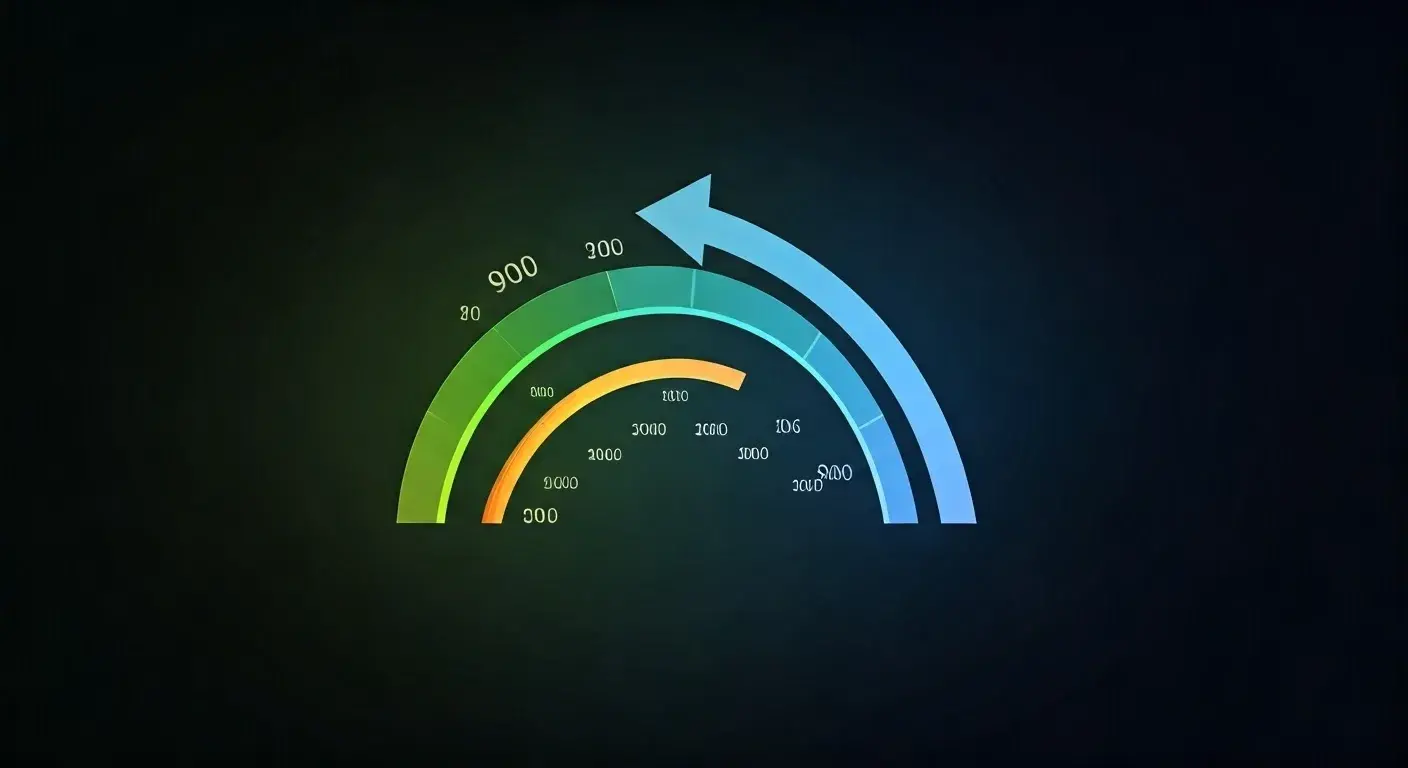-
Posted on: 05 Aug 2024

-
Introduction
In the world of personal finance, few numbers hold as much power as your credit scores. It's the key that unlocks favorable interest rates on mortgages, auto loans, and credit cards. But if you've ever checked your score, you've likely encountered a confusing reality: you don't have just one score. You have many. Different websites, apps, and lenders show you different numbers, leaving you to ask the ultimate question: Which FICO score is most reliable?
The truth is, the concept of a single "most reliable" score is a myth. Reliability isn't about one score being inherently better than another; it's about which score is most relevant for your specific financial goal. The most reliable FICO score is the one your lender actually uses to make a decision about your application.
This comprehensive guide will cut through the confusion. We'll explore the different FICO score models, reveal which ones lenders prefer for mortgages, auto loans, and credit cards, and explain the key differences between major versions like FICO 8, 9, and 10. By the end, you'll understand not just which FICO score is most reliable, but why, and how to ensure you're monitoring the right one for your needs.
What Is a FICO Score?
Before we dive into which model is most reliable, it's crucial to understand what a FICO score is and where it comes from.
The Fair Isaac Corporation (FICO) created the first universal credit scoring model in 1989. Its purpose was to give lenders a standardized, data-driven way to assess a borrower's credit risk—the likelihood that they will repay a loan on time. Your FICO score is a three-digit number, typically ranging from 300 to 850, that is calculated based on the information in your credit report from the three national credit bureaus: Equifax, Experian, and TransUnion.
The score is based on five core components, each with a different weight:
-
Payment History (35%): Your track record of making payments on time.
-
Amounts Owed/Credit Utilization (30%): The amount of credit you're using compared to your total available limits.
-
Length of Credit History (15%): The age of your oldest account and the average age of all your accounts.
-
Credit Mix (10%): The variety of credit accounts you have (e.g., credit cards, mortgage, auto loan, installment loans).
-
New Credit (10%): How many new accounts you've recently opened and recent hard inquiries.
FICO vs. VantageScore: A Key Distinction
It's a common misconception that "credit score" equals "FICO score." FICO is the industry leader, but it's not the only model. Its main competitor is VantageScore, created by the three credit bureaus themselves.
While both scores use similar data, their scoring algorithms and weighting of factors can differ significantly. For example, VantageScore 4.0 uses a trended data approach and may weigh certain factors like rent and utility payments differently if they are included in your report. However, when it comes to lending decisions, FICO scores are the undisputed champion. Over 90% of top lenders use FICO scores, making them the de facto standard for reliability in lending decisions. We'll explore this rivalry in more detail later.
How Many FICO Scores Actually Exist?
If you think you have one FICO score, prepare for a surprise. The actual number is much, much higher. Industry experts estimate consumers have over two dozen different FICO scores. This multiplicity arises from two main factors:
-
Three Credit Bureaus: Since the data on your Equifax, Experian, and TransUnion reports can differ, your FICO score calculated from each report will also differ.
-
Multiple Scoring Models: FICO has developed several generic and industry-specific scoring models over the years.
Industry-Specific FICO Scores
These are specialized scores optimized to predict risk for a specific type of loan. The most common ones are:
-
FICO Auto Scores: (e.g., FICO Auto Score 8, 9, 10) These place more weight on your history with auto loans.
-
FICO Bankcard Scores: (e.g., FICO Bankcard Score 8, 9, 10) These are tuned for credit card applications and put extra emphasis on how you manage revolving credit.
-
FICO Mortgage Scores: These are older, "classic" models (FICO Score 2, 4, and 5) that are still the gold standard for mortgage lending.
Generic FICO Scores (Base Scores)
These are the general-purpose scores that you might see on a credit monitoring site. The main versions in use today are:
-
FICO Score 8: The most widely used version across many lending types.
-
FICO Score 9: A newer model that treats medical collections and rental history more favorably.
-
FICO Score 10 and 10T: The newest suite, with Score 10T incorporating "trended data" to see if your debt is increasing or decreasing over time.
Which FICO Score Do Lenders Use the Most?
This is the heart of the matter. The most reliable FICO score is dictated by the lender and the type of loan you're seeking. Here’s a breakdown by industry.
Mortgage Industry
When applying for a mortgage, reliability is defined by the requirements of Fannie Mae and Freddie Mac, the government-sponsored enterprises that buy most mortgages. They mandate that lenders pull a tri-merge report that includes your FICO Score 2 from Equifax, FICO Score 5 from TransUnion, and FICO Score 4 from Experian. The lender then uses the middle score of these three to make their decision.
So, for a mortgage, the most reliable scores are these older models, not the newer FICO 8 or 9 you might be monitoring.
Auto Lending
Auto lenders are a mixed bag. Many use the industry-specific FICO Auto Scores (versions 8 or 9 are common). These scores are designed to be more predictive of your likelihood to repay a car loan. Some lenders may use the base FICO Score 8 or 9. If you're car shopping, your FICO Auto Score is likely the most reliable indicator of what the dealer will see.
Credit Cards & Personal Loans
For credit cards and personal loans, FICO Score 8 is the most commonly used model by far. It's been widely adopted because it did a better job than its predecessors at predicting risk, especially for revolving credit. You may also encounter lenders using FICO Score 9 or even the newer FICO Bankcard scores. For these purposes, monitoring your FICO Score 8 will give you the most reliable picture.
Table: Which FICO Score Is Most Reliable by Loan Type
Loan Type Most Commonly Used FICO Score(s) Why It's Used Mortgage FICO Score 2, 4, 5 Required by Fannie Mae & Freddie Mac Auto Loan FICO Auto Score 8 or 9 Optimized for predicting auto loan repayment Credit Card FICO Score 8 or FICO Bankcard Score 8 Most widely adopted model for revolving credit Personal Loan FICO Score 8 General risk assessment for installment loans
FICO 8 vs FICO 9 vs FICO 10: Key Differences and Reliability
Understanding the evolution of these models helps explain why lenders choose the ones they do.
FICO Score 8
-
Introduced: 2009
-
Key Traits: It's stricter on high credit utilization and isolated late payments. It also ignores collections accounts under $100.
-
Reliability: It is the workhorse of the lending world. Its long track record and proven predictability make it highly reliable for most non-mortgage lending decisions. Its widespread adoption is a key reason for its reliability.
FICO Score 9
-
Introduced: 2014 (wider adoption took years)
-
Key Traits: It's more forgiving. It disregards paid collection accounts entirely and treats medical collections less harshly than other collections. It also incorporates rental payment history (if reported by your landlord).
-
Reliability: While considered more "consumer-friendly," its reliability is hampered by slower lender adoption. Many lenders are comfortable with FICO 8 and see no need to change a system that works. For a consumer with medical collections, FICO 9 might be a more "accurate" reflection of their creditworthiness, but it's not yet the most reliable for getting approved if the lender still uses FICO 8.
FICO Score 10 and 10T
-
Introduced: 2020
-
Key Traits: FICO Score 10 is even more sensitive to high credit utilization and personal loan debt. FICO Score 10T ("T" for trended) is a revolutionary model that looks at 24 months of trended data. It can see if you're consistently paying down your balances or only making minimum payments.
-
Reliability: These are the most predictive models FICO has ever built. However, lender adoption is extremely slow. The reliability of FICO 10 models is currently low because almost no lenders are using them yet. This will change over the next 5-10 years.
So, which is more reliable today? For most people, FICO Score 8 remains the most reliable general-purpose score due to its overwhelming market share. The question "Is FICO Score 8 or 9 more accurate?" is different from "which is more reliable?" FICO 9 may be more accurate for some profiles, but FICO 8 is more reliably used.
Reliability vs Accuracy – What Consumers Should Know
This is a critical distinction. Accuracy refers to how correctly a score reflects the data in your credit report based on a specific model's algorithm. Reliability, in this context, refers to how likely that specific score is to be used by a lender to make a decision.
A FICO Score 9 might be a more accurate portrayal of your credit health if you have paid collections, but if your credit card issuer uses FICO Score 8, that older score is more reliable for predicting your approval odds and terms.
Factors that cause score differences:
-
Data Differences: Lenders don't report to all three bureaus, so your reports are not identical.
-
Model Differences: FICO 8, 9, and 10 weigh factors differently.
-
Timing: Scores are updated on different schedules as lenders report new information.
This is why checking multiple scores can be helpful. It gives you a complete picture of how different lenders might see you.
FICO vs VantageScore: Which Is More Reliable?
When asking "Do lenders prefer FICO or VantageScore?", the answer is overwhelmingly clear.
-
Market Share: FICO is used in over 90% of lending decisions. VantageScore has grown but still holds a single-digit percentage of the lending market.
-
Lender Preferences: Almost all major banks, credit unions, and auto lenders use FICO scores for their core lending decisions. VantageScore is more commonly used for credit pre-qualifications, tenant screening, and by free credit monitoring services like Credit Karma.
-
Reliability: For getting a loan, FICO is dramatically more reliable. A lender is almost certainly looking at a FICO score. VantageScore can be a useful educational tool to track your credit health trends, but you should not expect it to match the FICO score a lender pulls.
How to Check Your Most Reliable FICO Score
You can't manage what you don't measure. Here’s how to access the scores that matter.
Best Ways to Access Your FICO Score:
-
Your Credit Card Issuer: Many major cards (e.g., from Bank of America, Citibank, American Express, Discover, Wells Fargo) offer a free FICO score to their customers as a perk. This is often one of the easiest and most reliable ways to get a score. Check your monthly statement or online portal.
-
Paid Subscription from myFICO: The most comprehensive option. A myFICO subscription (ranging from ~$30 to ~$60 per month) gives you access to all your FICO scores across all three bureaus, including your mortgage, auto, and bankcard scores. This is the gold standard if you are actively shopping for a major loan.
-
Other Paid Services: Services like IdentityIQ and Credit.com also provide FICO scores for a fee.
Free vs. Paid Services:
-
Free services (like those offered by banks or apps like Experian) are excellent for general monitoring and often provide a FICO Score 8.
-
Paid services (like myFICO) are essential if you need to see your industry-specific scores, like your mortgage FICO scores, before a major application.
Which Scores to Monitor for Specific Goals:
-
General Monitoring: Your free FICO Score 8 from Experian (available at Experian.com for free) is sufficient.
-
Buying a House: You need a service that provides your FICO Scores 2, 4, and 5 from all three bureaus (e.g., myFICO).
-
Auto Loan: Monitor your FICO Auto Score 8 or 9.
-
Credit Card: Monitoring your FICO Score 8 is perfectly adequate.
Tips to Improve Your FICO Score (Across All Models)
The best way to ensure reliability across all scoring models is to practice excellent credit habits. The fundamentals that drive all FICO scores are the same:
-
Pay All Bills on Time, Every Time: Payment history is the largest factor. Set up autopay for minimum payments to never miss a due date.
-
Keep Your Credit Utilization Low: This is the second biggest factor. Aim to use less than 30% of your total available credit, and ideally below 10% for the best scores. Pay down balances before the statement closing date.
-
Only Apply for New Credit When Necessary: Each hard inquiry can slightly ding your score. Avoid applying for multiple new credit lines in a short period.
-
Maintain a Long Credit History: Keep your oldest credit cards open, even if you don't use them often. This establishes a long average age of accounts.
-
Diversify Your Credit Mix: Having a healthy mix of credit (e.g., a credit card, an auto loan, and a mortgage) can help, but this is a minor factor. Don't take out loans just for this.
Conclusion: So, Which FICO Score Is Most Reliable?
The answer to "which FICO score is most reliable?" is not a single number. Reliability is contextual.
-
For a mortgage, the most reliable scores are the older FICO Scores 2, 4, and 5.
-
For an auto loan, the most reliable score is likely an industry-specific FICO Auto Score.
-
For credit cards and personal loans, the most reliable and widely used score is FICO Score 8.
While newer models like FICO 9 and 10T may be more "accurate" or predictive in a technical sense, their reliability is limited by slow lender adoption. FICO Score 8 remains the most reliable general-purpose score due to its overwhelming market share.
The most powerful strategy is to focus on the fundamental health of your credit reports. By maintaining a history of on-time payments, keeping balances low, and managing credit responsibly, you will build a strong profile that will be viewed favorably by any FICO score model a lender decides to use.
Faq
1. What is the most reliable FICO score version?
The most reliable FICO score version for general use is FICO Score 8, as it is the most widely used by lenders for credit cards, personal loans, and more.
2. Are older FICO scores still used by lenders?
Yes, some lenders, especially mortgage lenders, still use older versions like FICO Score 2, 4, and 5 when evaluating applications.
3. Is FICO Score 8 more accurate than other versions?
FICO Score 8 is highly reliable for general credit decisions, but
4. Should I monitor all versions of my FICO score?
It’s smart to focus on FICO Score 8 for everyday credit needs and check industry-specific scores if you're applying for a mortgage or auto loan.
5. Is VantageScore as reliable as FICO?
While VantageScore is widely used for consumer credit monitoring, FICO scores are generally more trusted by lenders when making actual lending decisions.
-











